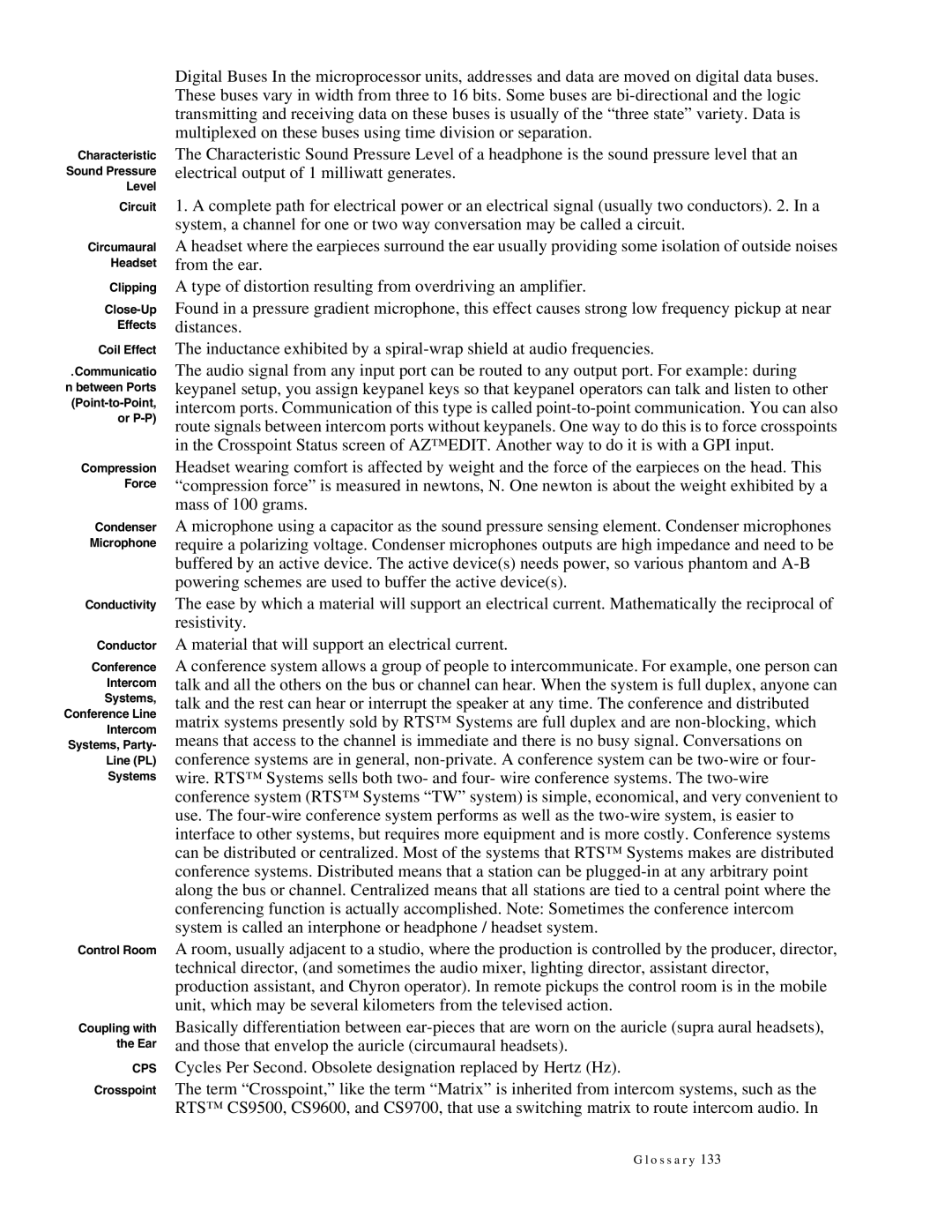Characteristic
Sound Pressure
Level
Circuit
Circumaural
Headset
Clipping
Effects
Coil Effect
.Communicatio n between Ports
Compression Force
Condenser
Microphone
Conductivity
Conductor
Conference
Intercom
Systems,
Conference Line
Intercom
Systems, Party-
Line (PL)
Systems
Control Room
Coupling with the Ear
CPS
Crosspoint
Digital Buses In the microprocessor units, addresses and data are moved on digital data buses. These buses vary in width from three to 16 bits. Some buses are
The Characteristic Sound Pressure Level of a headphone is the sound pressure level that an electrical output of 1 milliwatt generates.
1.A complete path for electrical power or an electrical signal (usually two conductors). 2. In a system, a channel for one or two way conversation may be called a circuit.
A headset where the earpieces surround the ear usually providing some isolation of outside noises from the ear.
A type of distortion resulting from overdriving an amplifier.
Found in a pressure gradient microphone, this effect causes strong low frequency pickup at near distances.
The inductance exhibited by a
The audio signal from any input port can be routed to any output port. For example: during keypanel setup, you assign keypanel keys so that keypanel operators can talk and listen to other intercom ports. Communication of this type is called
A microphone using a capacitor as the sound pressure sensing element. Condenser microphones require a polarizing voltage. Condenser microphones outputs are high impedance and need to be buffered by an active device. The active device(s) needs power, so various phantom and
The ease by which a material will support an electrical current. Mathematically the reciprocal of resistivity.
A material that will support an electrical current.
A conference system allows a group of people to intercommunicate. For example, one person can talk and all the others on the bus or channel can hear. When the system is full duplex, anyone can talk and the rest can hear or interrupt the speaker at any time. The conference and distributed matrix systems presently sold by RTS™ Systems are full duplex and are
A room, usually adjacent to a studio, where the production is controlled by the producer, director, technical director, (and sometimes the audio mixer, lighting director, assistant director, production assistant, and Chyron operator). In remote pickups the control room is in the mobile unit, which may be several kilometers from the televised action.
Basically differentiation between
Cycles Per Second. Obsolete designation replaced by Hertz (Hz).
The term “Crosspoint,” like the term “Matrix” is inherited from intercom systems, such as the RTS™ CS9500, CS9600, and CS9700, that use a switching matrix to route intercom audio. In
